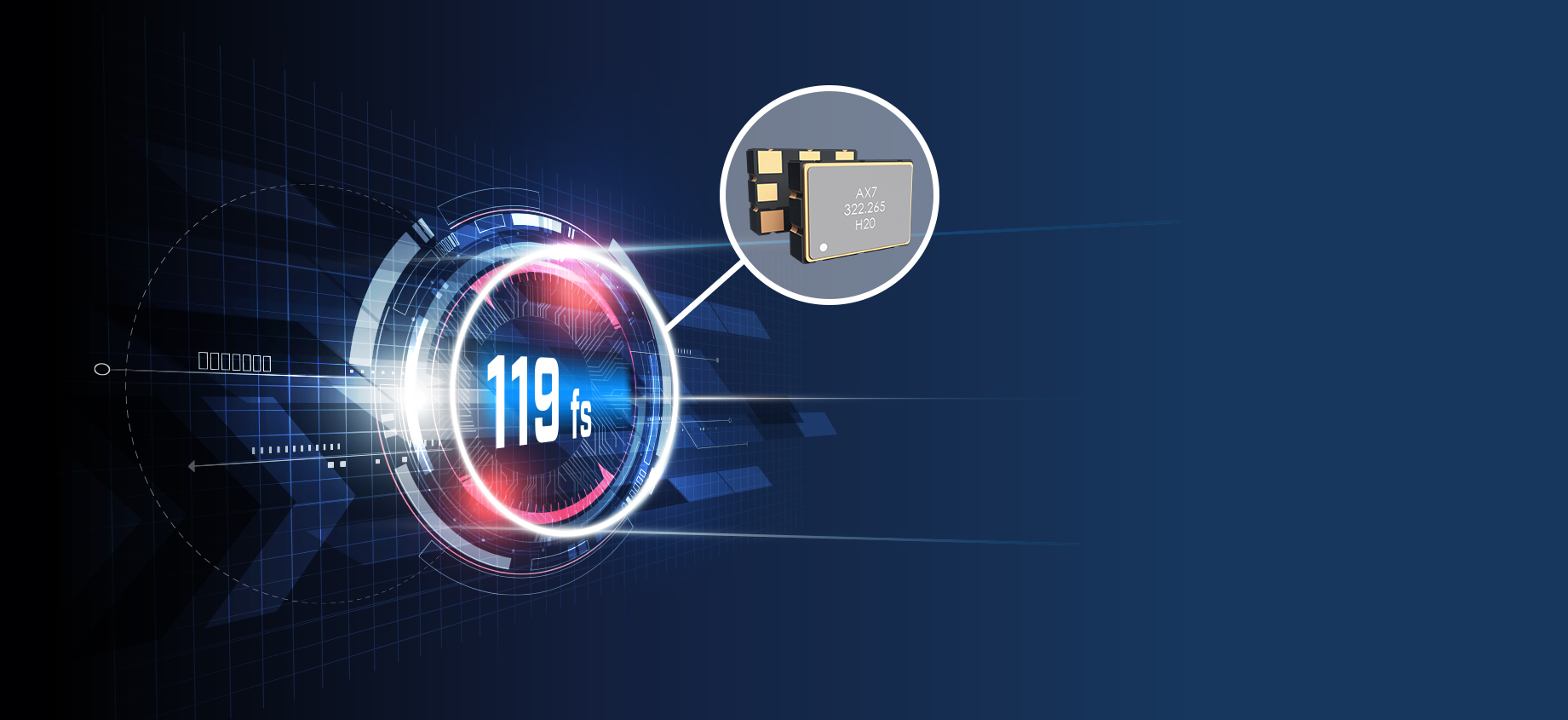By Gina Roos, Editor-in-Chief
As devices continue to shrink in size, so does the need to miniaturize electronic components. In recent months, frequency control manufacturers have focused on the miniaturization of both quartz crystals and oscillators. Improving jitter performance and stability along with helping optimize power consumption are also on the to-do list as the industry moves to higher-speed communications.
One example is Micro Crystal AG’s 32.768-kHz quartz crystal that is housed in a footprint that measures 1.6 × 1.0 mm with a maximum thickness of 0.35 mm. The new tiny geometry enhances the circuitry in applications in which bending radii are critical and complements the new bendable thin-film batteries from Renata, said the company. Applications include smart cards, e-textile, wearables (including activity bands), embedded modules, and health care. Both the low-frequency CM9V-T1A crystals (1.6 × 1.0 × 0.3 mm) and CM8V-T1A (1.6 × 1.0 × 0.3 mm) are available in volume production.
For higher-frequency applications, IQD Frequency Products Ltd. has launched a range of quartz crystals that can operate in the fundamental mode up to 200 MHz and are housed in a hermetically sealed 2.5 × 2.0 × 0.6-mm (IQXC-152) and 2.0 × 1.6 × 0. 5-mm (IQXC-153) ceramic 4-pad package.
In addition, the quartz crystals offer improved performance. Two of the pads in the package are grounded to the metal lid to improve electromagnetic performance (EMI). At 70 MHz to 200 MHz, the frequency tolerance can be as low as ±30 ppm. Stability is reported at ±30 ppm over the full industrial operating temperature range of –40°C to 85°C with the capacitance load ranging from 8 pF to 30 pF.
“The IQXC-152 & IQXC-153 enables design engineers to use higher frequencies in the fundamental mode, which eliminates the need to use a PLL or a tank circuit picking up the third, fifth or seventh harmonics,” said IQD. “A higher starting frequency can also be used when looking to generate, for example, 2.4 GHz, which cuts down on the jitter/phase noise in the circuit.” Packaging options are tape-and-reel or cut-tape.
In the oscillator space, the AX7 ClearClock series of oscillators from Abracon LLC targets frequencies up to 2.1 GHz, is optimized to save power in end systems, and offers a typical 119 fs of RMS phase jitter. The series is well-suited for low jitter clocking needed for high serial data rates up to 56 Gbits/s and higher.
Despite reaching low RMS phase jitter of 110 fs to 125 fs (typical, depending on output frequency), ClearClock is optimized for low power consumption and can be used in high-performance computing and cloud computing applications that call for higher data rate transmission and lower power consumption.
Abracon said that previous generations of low-jitter oscillators with less performance consumed as much as 75% higher power compared to ClearClock under equivalent operating conditions.
The AX7 series offers a factory configurable frequency range from 50 MHz to 2.1 GHz. Other features include OE functionality; VDD operation of 1.8 V, 2.5 V, or 3.3 V; and LVPECL and LVDS differential output logic options.
Packaged in a standard 5 × 7-mm footprint, the ClearClock AX7 series operates over a temperature range of –40°C to 85°C with all-inclusive frequency stability of either ±50 ppm or ±100 ppm. Abracon’s distributors stock the most common frequencies and output logic types.

Abracon’s AX7 ClearClock series of oscillators. (Image: Abracon)
Also touting excellent RMS phase jitter and phase noise performance, Ecliptek LLC offers a multi-voltage quartz crystal oscillator in a compact footprint, measuring 2.5 × 3.2 mm (with four pads). The device offers tight stabilities down to ±20 ppm and an extended operating temperature range of –40°C to 85°C.
The EB19E2 provides a continuous supply voltage range from 1.62 V to 3.63 V and a frequency range from 1 MHz to 50 MHz. “The variable supply voltage feature allows customers to use the EB19E2 Series across multiple platforms with a range of supply voltages,” said Ecliptek. Target applications include medical equipment, Gigabit Ethernet, Fiber Channel, routers, servers, and hubs.
In the high-performance end of the market, frequency control manufacturers are also making performance improvements to their lineup of oven-controlled crystal oscillators (OCXOs), voltage-controlled crystal oscillators (VCXOs), and temperature-compensated crystal oscillators (TCXOs) for extreme environmental conditions.
Offering a high temperature range and high stability, the XO517X series of OCXOs from MtronPTI is designed as a timing reference for extreme environment applications. The XO517X series offers temperature stability of less than ±1.0 ppb over an extended operating temperature range of –40°C to 90°C. Available frequency range is 10 MHz and 40 MHz. Customers should contact the company for other frequencies. Applications include ground-based SATCOM, troposcatter communications, extended temperature military/aerospace/avionics applications, downhole seismic equipment, and high-temperature industrial controls.
Nihon Dempa Kogyo (NDK) is combining the best of two worlds: packing performance in smaller packaging for higher-performance TCXOs. The company claims the smallest low-g sensitivity TCXO housed in either a 2.0 × 1.6 × 0.7-mm footprint or a high-precision version supporting Stratum 3 and ITU-T TR-G8262 applications in a 3.2 × 2.5 × 1.1-mm package.
NDK said that the vibration sensitivity (0.1 ppb/g) of the TCXOs are 10 times better than conventional TCXOs. This makes them suited for applications such as those in outdoor environments, cooling fans, drones, and any application that uses communication devices and other sources that could affect oscillators.
XOs/VCXOs target 56G SerDes
Timing device manufacturers are also prepping for higher-speed serial communications applications. Silicon Labs offers a portfolio of high-performance clocks and oscillators aimed at the 56G PAM-4 SerDes and emerging 112G serial applications. “56G designs rely on four-level pulse-amplitude modulation (PAM-4) signaling for serial data transmission to increase the bit rate per channel while keeping the bandwidth constant,” said Silicon Labs.
To meet these requirements, Silicon Labs’ product portfolio now includes the Si539x clocks that deliver frequency flexibility and low jitter and the Si56X Ultra Series of crystal oscillators (XOs) and VCXOs.
The Si5391 any-frequency clock generator claims the industry’s lowest jitter. The company also touts that it is the only clock generator that can provide all clock frequencies needed in 200/400/600G designs from a single IC while delivering sub-100-fs RMS phase jitter for 56G SerDes reference clocks. The device features up to 12 differential outputs and is available in frequency A/B/C/D grade options.
“A Precision Calibration P-grade option optimizes RMS phase jitter performance with a 69-fs (typical) specification for the primary frequencies needed in 56G SerDes designs,” said Silicon Labs. “The Si5391 is a true sub-100-fs ‘clock-tree-on-a-chip’ solution designed to synthesize all output frequencies from the same IC while meeting 56G PAM-4 reference clock jitter requirements with margin.”
The Si539x jitter attenuators also claim industry-leading jitter performance and frequency flexibility. These ultra-low any-frequency jitter clocks generate any combination of output frequencies from any input frequency while delivering 90-fs RMS phase jitter, according to the company.
The Si5395/4/2 P-grade devices offer best-in-class jitter (69-fs RMS typical phase jitter) for 56G/112G SerDes clocking applications, said Silicon Labs.
The Si5391 and Si539x families are supported by Silicon Labs’ ClockBuilder Pro (CBPro) software for easier device configuration and customization. The company said that customers can customize a clock solution using the CBPro and get samples in as little as two weeks.
The Si56x Ultra Series VCXO/XO family is well-suited for next-generation high-performance timing applications that require ultra-low-jitter oscillators. The company said that the Si56x VCXO/XOs are customizable to any frequency up to 3 GHz, supporting twice the operating frequency range of previous VCXO products with half the jitter.
The Si56x oscillators are available with single, dual, quad, and I2 C-programmable options in 5 × 7-mm and 3.2 × 5-mm packages. This enables the devices to be drop-in-compatible with traditional XOs, VCXOs, and VCSOs. Typical phase jitter is as low as 90 fs.
Purpose-built for 56G designs, Silicon Labs also offers the Si54x Ultra Series XO family that targets applications that require tighter stability and guaranteed long-term reliability, such as optical transport networking (OTN), broadband equipment, data centers, and industrial systems.
“Using an Si54x XO as a low-jitter reference clock maximizes signal-to-noise ratio (SNR) headroom, minimizes bit errors, and enhances signal integrity,” said Silicon Labs. Typical phase jitter is as low as 80 fs.
![]()
Silicon Labs’ high-performance clocks and oscillators aimed at 56G PAM-4 SerDes and emerging 112G serial applications. (Image: Silicon Labs)
MEMS oscillators make inroads into high-reliability applications
Touting advantages in stability, reliability, robustness, and low phase noise and jitter, microelectromechanical systems (MEMS) oscillators are making inroads into applications such as automotive and telecom that call for improved timing performance and high-reliability parts that can withstand extreme environmental conditions.
One example is the DSA family from Microchip Technology Inc., which debuted earlier this year as the industry’s first automotive-grade multiple-output MEMS oscillator. “Technological advancements and the increased adoption of complex electronics systems in modern vehicles require superior timing performance and reliability,” said Microchip. “Timing precision, accuracy, and tolerance to harsh environments are essential to ensuring precise operation in today’s highly advanced automotive systems.”
The DSA family consists of the DSA1001, DSA11x1, DSA11x5 and DSA2311, which offer high tolerance to mechanical shock in harsh environments over a frequency range of 2.3 MHz to 170 MHz. The devices are Automotive Electronics Council Q100 (AEC-Q100)-qualified with ±20 ppm stability over temperatures ranging from –40°C to 125°C.
Some application examples that require tight frequency stability over a wide temperature range include advanced driver assistance systems (ADAS), light detection and ranging (LiDAR), in-vehicle Ethernet, and autonomous driving.
The DSA family claims to provide 20-times-better reliability, 500-times-better tolerance to shock, and five-times-better vibration resistance than traditional quartz-based crystal devices.

Microchip Technology’s DSA family of MEMS oscillators are AEC-Q100-qualified with ±20-ppm stability over a temperature range of –40°C to 125°C. (Image: Microchip Technology)
As a multiple-out MEMS oscillator, the device can replace multiple crystals and oscillators. Microchip said that the DSA2311, for example, can replace two crystals or oscillators on a board. It’s housed in a small 2.5 × 2.0-mm package, delivering more space savings. Target applications include infotainment systems and cameras.
Microchip offers designers a ClockWorks online configurator tool to help them select the right oscillator based on their specific requirements for frequency, package size, and temperature range. Designers can also order free samples via the tool.
Another MEMS timing manufacturer, SiTime Corp., offers a family of MEMS-based timing and synchronization solutions for 5G applications. “In a dense 5G network that transmits at higher speeds, radio-to-radio time accuracy must be within 65 nanoseconds — 20 times better than 4G,” said SiTime. At the same time, timing solutions need to withstand tough environmental conditions such as shock, vibration, rapid temperature changes, and extreme temperatures, added the company.
SiTime said that its MEMS-based timing solutions can meet these requirements “while offering 20-times-better reliability and one-fifth the power.”
SiTimes’ Elite family of Super-TCXOs offer tight stability (±0.1 ppm to ±2.5 ppm) over a frequency range of 1 MHz to 220 MHz. These high-precision oscillators can replace legacy quartz-based OCXOs in 5G and IEEE 1588 synchronization applications, reducing size and power, according to the company.
Other key specs include 30-times-better dynamic stability, I2 C digital frequency tuning, and on-chip power supply noise filtering. The operating temperature range is –40°C to 105°C.
Advertisement
Learn more about AbraconEcliptekIQD Frequency ProductsMicro CrystalMicrochip TechnologyMtronPTINDK AmericaSilicon LabsSiTime





